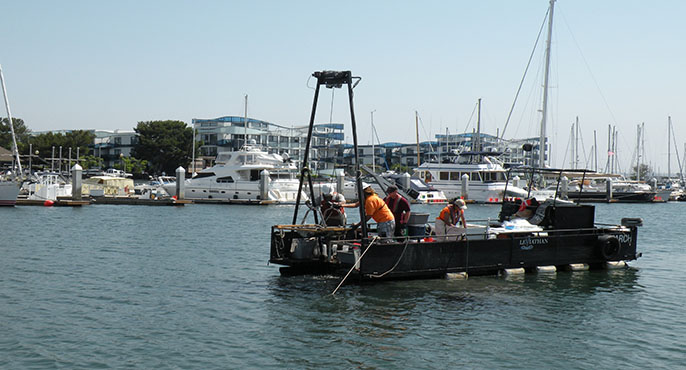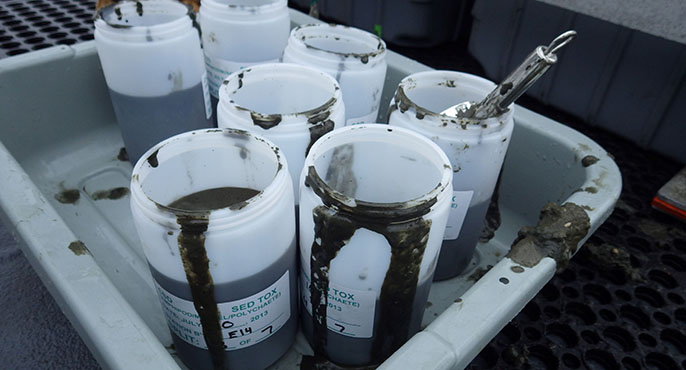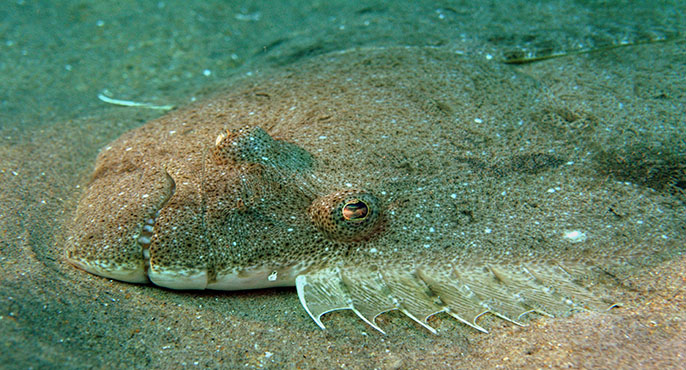Sediment quality assessment frameworks are a systematic approach to synthesize and interpret the findings of multiple types of common sediment quality studies. Unlike traditional sediment evaluations that rely on best professional judgement to interpret data and results, assessment frameworks bring standardization to the assessment process. In this way, sediment quality assessment frameworks have paved the way for development of more consistent, rigorous sediment management programs and policies statewide.
SCCWRP is an international leader in the development of sediment quality assessment frameworks and corresponding sediment quality assessment tools to better protect California’s coastal marine ecosystems. Environmental managers use the frameworks to integrate multiple types of common sediment quality studies, including sediment chemistry analyses, sediment toxicity laboratory studies, biology-based evaluations of the health of marine communities, and bioaccumulation modeling of how chemical contaminants move through food webs. The findings of these standardized sediment quality evaluations enable managers to direct limited resources to areas where they’re needed most.

Responding to a legacy of sediment contamination
Prior to the creation of modern environmental laws, Californians flushed chemical contaminants down storm drains and through wastewater disposal systems without fully realizing their potential for long-term environmental impacts. These chemical pollutants stuck to particulate matter in the water column and settled to the seafloor, forming a layer of coastal seafloor sediment that has remained contaminated for decades. Because removing all contaminated sediment from across hundreds of square miles of California coastal waters would be prohibitively costly (as well as environmentally damaging), California’s environment management community instead has focused on directing limited resources to where ecosystem impacts are disproportionately severe. This focus underscores the importance and value of sediment quality assessment frameworks.

Supporting California’s Sediment Quality Objectives
The main driver propelling development of sediment quality assessment frameworks has been California’s Sediment Quality Objectives (SQO), a three-part series of regulatory targets intended to protect sediment quality in enclosed bays and estuaries statewide. Adopted by the State Water Board in 2008, these regulatory targets have necessitated development of rigorous, standardized approaches that define for environmental managers how to determine compliance with each target.
- SQO for the protection of sediment-dwelling organisms: The State Water Board in 2008 adopted a sediment quality assessment framework based on the sediment quality triad scoring tool, which was co-developed by SCCWRP to assess the impacts of sediment contamination on sediment-dwelling biological communities. Prior to the development of this quantitative assessment approach, environmental managers relied on best professional judgement to interpret the results of multiple separate sediment-quality studies.
- SQO for the protection of humans who consume locally caught seafood: The State Water Board in 2018 adopted a second standardized assessment framework intended to protect the health of humans who consume seafood caught in enclosed bays and estuaries. This framework compares the health risks associated with eating contaminated local seafood to the role of sediment contamination vs. other pollutant sources in contributing to this seafood contamination.
- SQO for the protection of wildlife: SCCWRP is laying the groundwork for building a possible third assessment framework intended to protect the health of wildlife, which become exposed to sediment contaminants via food web transfer.

